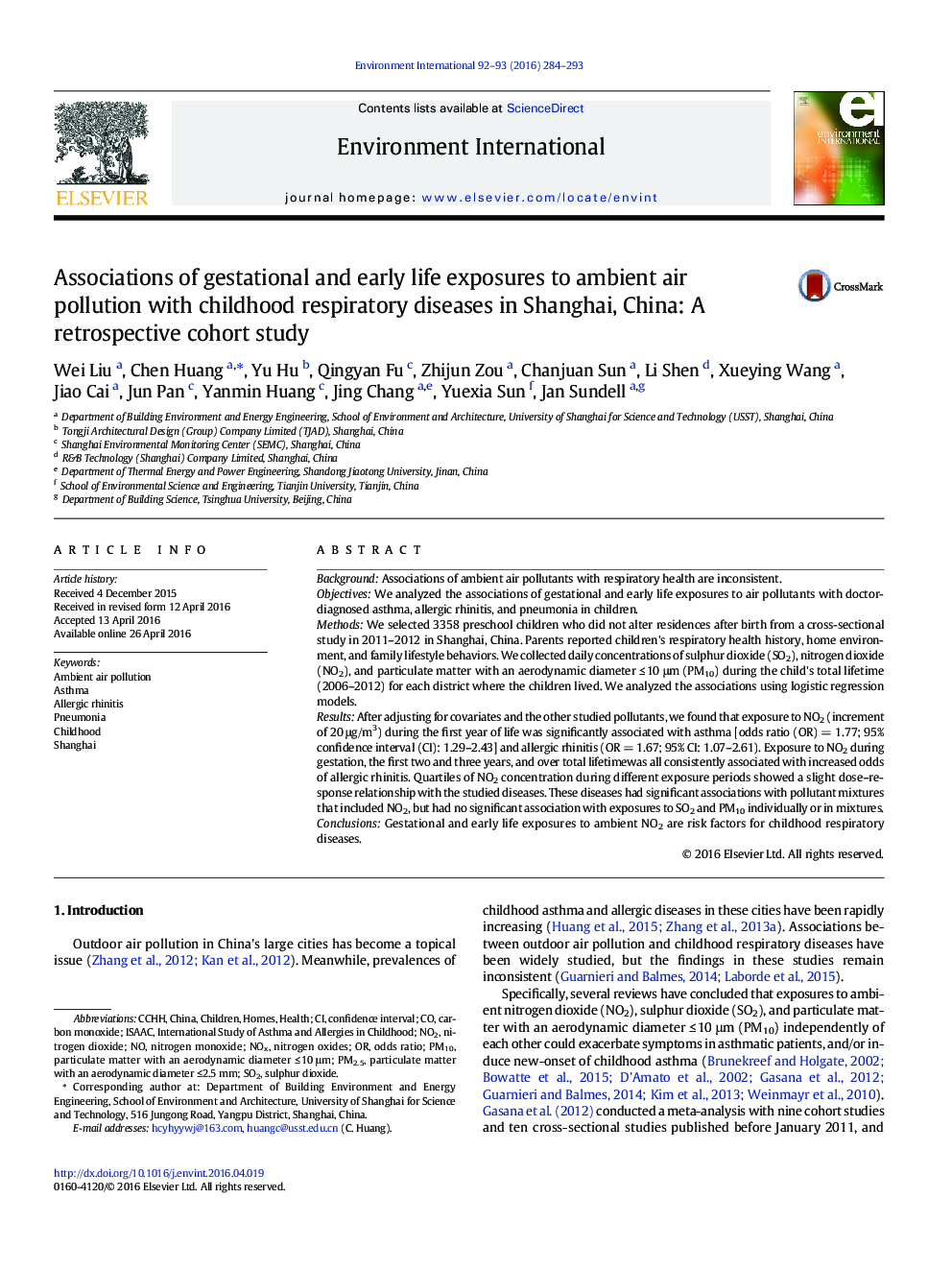| کد مقاله | کد نشریه | سال انتشار | مقاله انگلیسی | نسخه تمام متن |
|---|---|---|---|---|
| 6312994 | 1619037 | 2016 | 10 صفحه PDF | دانلود رایگان |
- We compared differences in effect of pollutant in various periods on child's health.
- Lifetime exposures to NO2 significantly associated with childhood allergic rhinitis.
- No significant associations were found of SO2 and PM10 and their mixture with diseases.
- SO2 and PM10 could enhance effect of ambient NO2 on childhood respiratory health.
BackgroundAssociations of ambient air pollutants with respiratory health are inconsistent.ObjectivesWe analyzed the associations of gestational and early life exposures to air pollutants with doctor-diagnosed asthma, allergic rhinitis, and pneumonia in children.MethodsWe selected 3358 preschool children who did not alter residences after birth from a cross-sectional study in 2011-2012 in Shanghai, China. Parents reported children's respiratory health history, home environment, and family lifestyle behaviors. We collected daily concentrations of sulphur dioxide (SO2), nitrogen dioxide (NO2), and particulate matter with an aerodynamic diameter â¤Â 10 μm (PM10) during the child's total lifetime (2006-2012) for each district where the children lived. We analyzed the associations using logistic regression models.ResultsAfter adjusting for covariates and the other studied pollutants, we found that exposure to NO2 (increment of 20 μg/m3) during the first year of life was significantly associated with asthma [odds ratio (OR) = 1.77; 95% confidence interval (CI): 1.29-2.43] and allergic rhinitis (OR = 1.67; 95% CI: 1.07-2.61). Exposure to NO2 during gestation, the first two and three years, and over total lifetimewas all consistently associated with increased odds of allergic rhinitis. Quartiles of NO2 concentration during different exposure periods showed a slight dose-response relationship with the studied diseases. These diseases had significant associations with pollutant mixtures that included NO2, but had no significant association with exposures to SO2 and PM10 individually or in mixtures.ConclusionsGestational and early life exposures to ambient NO2 are risk factors for childhood respiratory diseases.
Journal: Environment International - Volumes 92â93, JulyâAugust 2016, Pages 284-293
